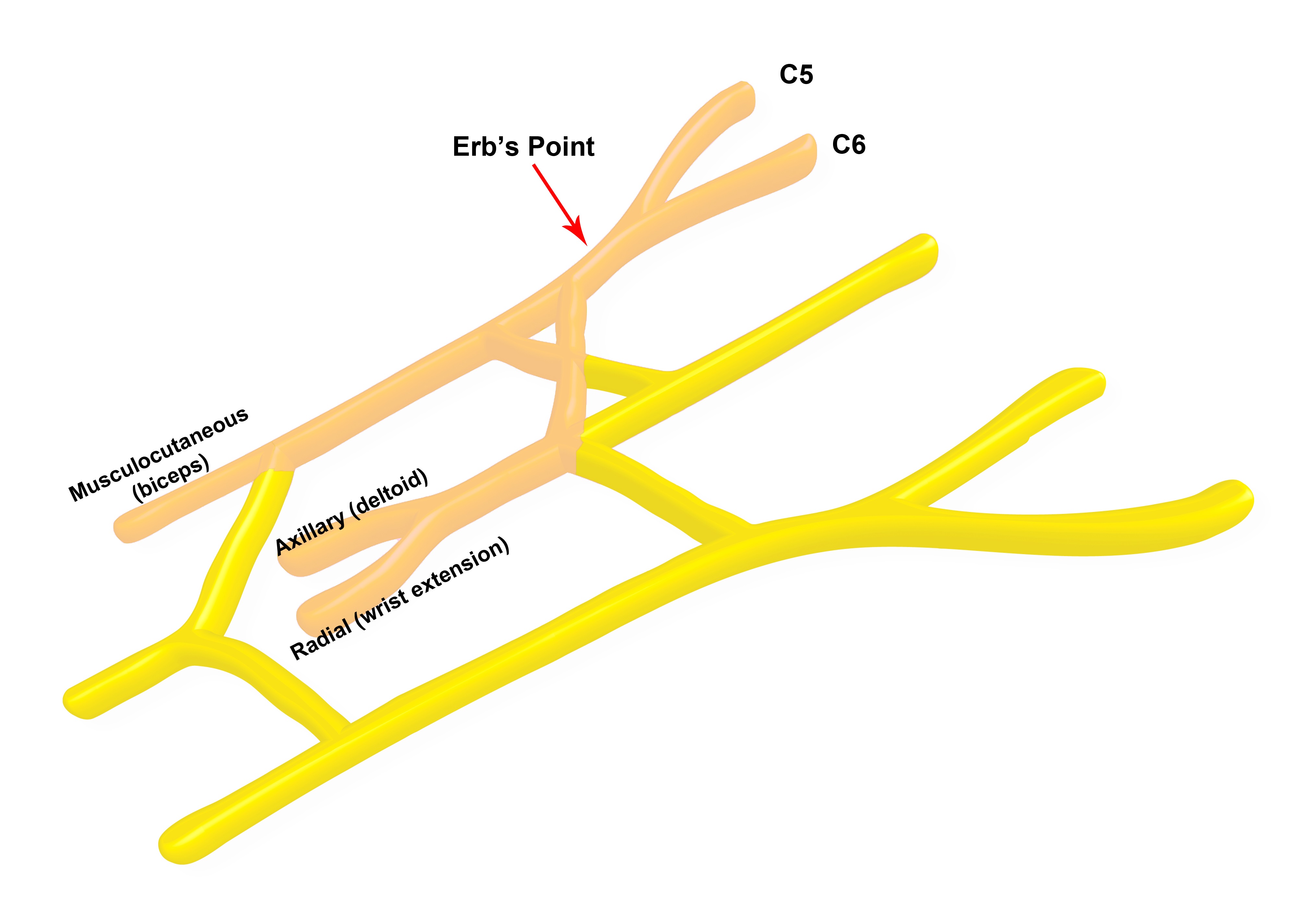WBR0472
| Author | [[PageAuthor::William J Gibson (Reviewed by Yazan Daaboul, M.D.) and Alison Leibowitz [1])]] |
|---|---|
| Exam Type | ExamType::USMLE Step 1 |
| Main Category | MainCategory::Anatomy |
| Sub Category | SubCategory::Musculoskeletal/Rheumatology, SubCategory::General Principles |
| Prompt | [[Prompt::A 3-week-old girl is brought to the physician's office for asymmetric movement of her upper extremities. The mother reports that the girl is a first-born child. The girl weighed 4600 g at birth and is a product of a difficult assisted vaginal delivery with forceps. The pregnancy was complicated by gestational diabetes for which the mother was administered insulin before meals. On physical examination, the girl now has an adducted, medially rotated, and pronated left arm with flexion of the wrist and fingers, while the right arm is normal. Damage to which of the following nerves most likely caused this patient’s condition?]] |
| Answer A | AnswerA::Axillary nerve |
| Answer A Explanation | [[AnswerAExp::The axillary nerve originates from the nerve roots C5 and C6. It is not directly damaged in Erb’s palsy. The axillary nerve innervates the deltoid muscle, disallowing patients with Erb’s palsy to abduct the affected arm.]] |
| Answer B | AnswerB::Radial nerve |
| Answer B Explanation | [[AnswerBExp::The radial nerve is not directly damaged in Erb’s palsy. However, the radial nerve is unable to conduct efferent nerve signals to the wrist extensors, as the radial nerve originates from the C5 and C6 cervical nerve roots.]] |
| Answer C | AnswerC::C5-C6 nerve roots |
| Answer C Explanation | [[AnswerCExp::Erb’s Palsy classically results from an injury to the nerve roots C5-C6. Patients typically present with an adducted, pronated arm with flexion of the wrist and fingers.]] |
| Answer D | AnswerD::C6, C7 nerve roots |
| Answer D Explanation | [[AnswerDExp::While C6 is often affected in Erb’s palsy, C7 is usually not involved. On the other hand, C5 is frequently involved in Erb's palsy. Lesions of the C7 nerve root would affect the triceps and finger extension.]] |
| Answer E | AnswerE::C8-T1 |
| Answer E Explanation | [[AnswerEExp::The ulnar nerve originates from the C8-T1 nerve roots. The ulnar nerve is responsible for medial wrist and finger flexion. Lesion of the ulnar nerve typically results from a fracture of the medial epicondyle of the humerus. Lesion of the C8-T1 nerve roots is called Klumpke’s palsy.]] |
| Right Answer | RightAnswer::C |
| Explanation | [[Explanation::Erb’s palsy (waiter's tip palsy) classically results from an injury to the nerve roots C5 and C6. Although injury to C7 nerve roots may be observed in Erb's palsy, less than 50% of patients have C7 nerve root injury. Patients are typically unable to abduct (deltoid and supraspinatus) or laterally rotate (infraspinatus) their shoulders due to involvement of C5 nerve root. Also, patients cannot supinate their arm (supinator) or flex their elbow (biceps and brachioradialis muscles) due to involvement of both C5 and C6. Finally, patients cannot extend their wrists (extensors) or their fingers (extensors) due to involvement of C6 (and possibly C7) nerve roots. Consequently, patients typically present similarly to the patient in the vignette with an adducted, pronated arm and flexed wrists and fingers.
Erb’s palsy is often caused by shoulder dystocia at birth that results from severe traction of the shoulder during delivery. Risk factors for shoulder dystocia may be either maternal, fetal, or labor-related. Maternal factors include post-dates pregnancy, abnormal pelvic anatomy, gestational diabetes, short stature, obesity, and previous shoulder dystocia. The most important fetal factor is macrosomia (weight at birth > 4000 g). Labor-related factors include use of forceps of vacuums for delivery assistance and protracted labor.
First Aid 2014 page 413]] |
| Approved | Approved::Yes |
| Keyword | WBRKeyword::Brachial plexus, WBRKeyword::Nerve, WBRKeyword::Erb's palsy, WBRKeyword::Erb palsy, WBRKeyword::Waiter's tip palsy, WBRKeyword::Palsy, WBRKeyword::Shoulder dystocia, WBRKeyword::Dystocia, WBRKeyword::Delivery, WBRKeyword::Gestational diabetes, WBRKeyword::Macrosomia, WBRKeyword::Normal vaginal delivery |
| Linked Question | Linked:: |
| Order in Linked Questions | LinkedOrder:: |
